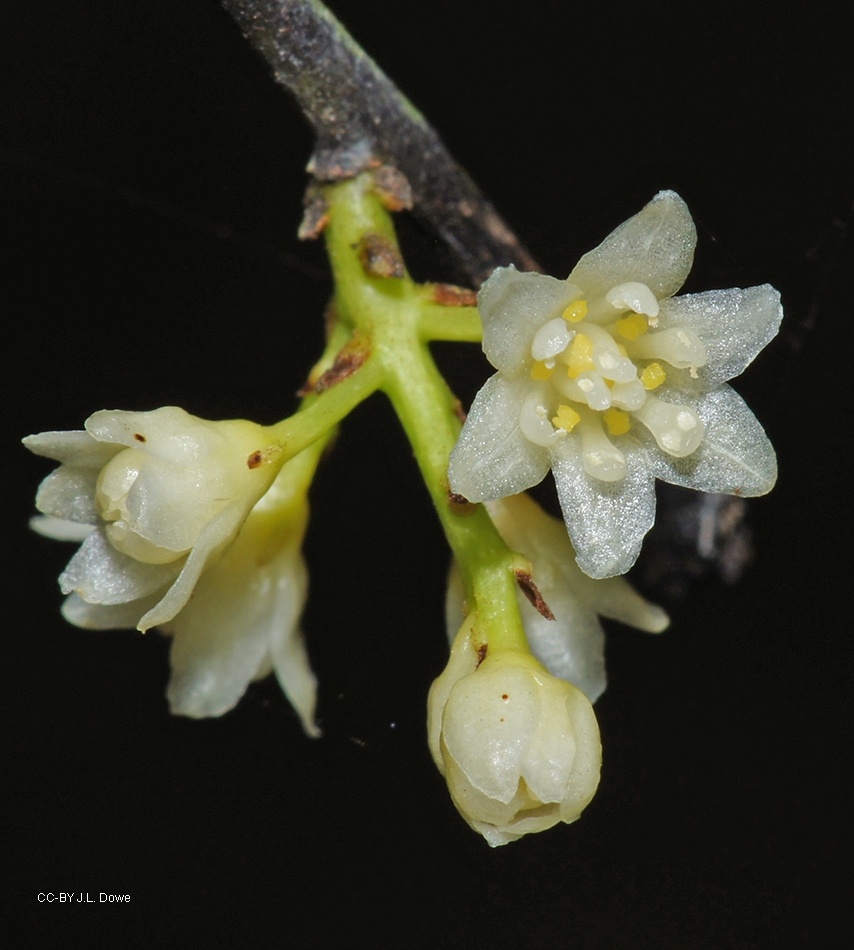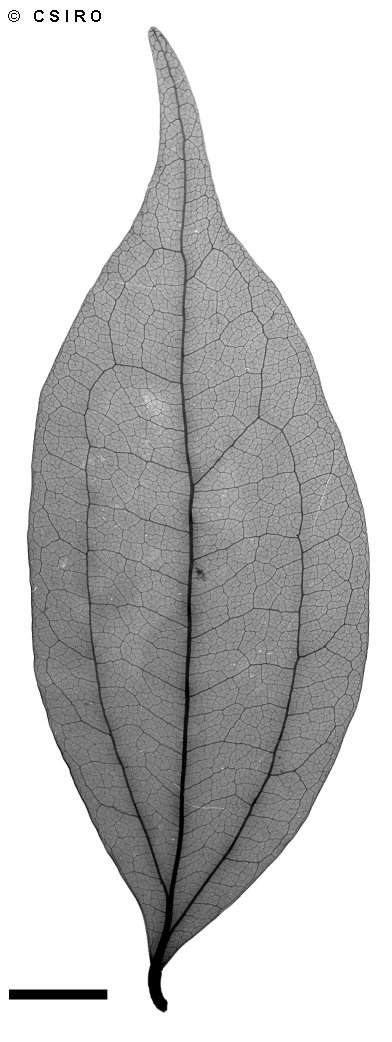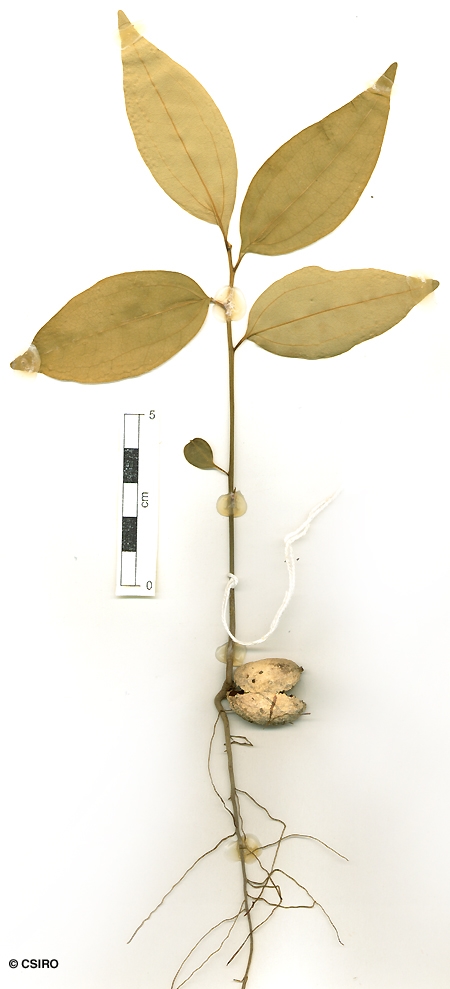Australian Tropical Rainforest Plants - Online edition
Cryptocarya laevigata Blume







Blume, C.L. von (1827) Bijdragen tot de Flora van Nederlandsch Indie No. 7 : 556. Type: in sylvis montanis. Java (?).
Glossy Laurel; Grey Sassafras; Laurel, Glossy; Red Fruited Laurel; Sassafras, Grey
Seldom exceeding 30 cm dbh. Blaze odour may be conspicuous and quite pleasant resembling that of Red Cedar (Toona ciliata).
Twigs +/- terete (slightly fluted, only when very young), clothed in straight, white or pale brown, appressed hairs when very young but soon becoming glabrous. Leaf blades about 5-15.5 x 1.3-6.1 cm, green and glabrous on the underside at maturity, with a few sparsely scattered straight, white or pale brown, appressed hairs visible only on very young leaves. Midrib usually flush with the upper surface (sometimes slightly raised). Petioles channelled on the upper surface. Oil dots visible with a lens.
Occurs in NEQ and also in south-eastern Queensland and north-eastern New South Wales but not in coastal central Queensland. Altitudinal range from sea level to 450 m. Grows as an understory tree in well developed lowland rain forest. Also occurs in Malesia.
Leaf material of this species was active against tumor cell cultures. Collins et al. (1990).
This species has no commercial value as it seldom grows large enough to produce millable logs. Wood specific gravity 0.86-0.91. Hyland (1989).





